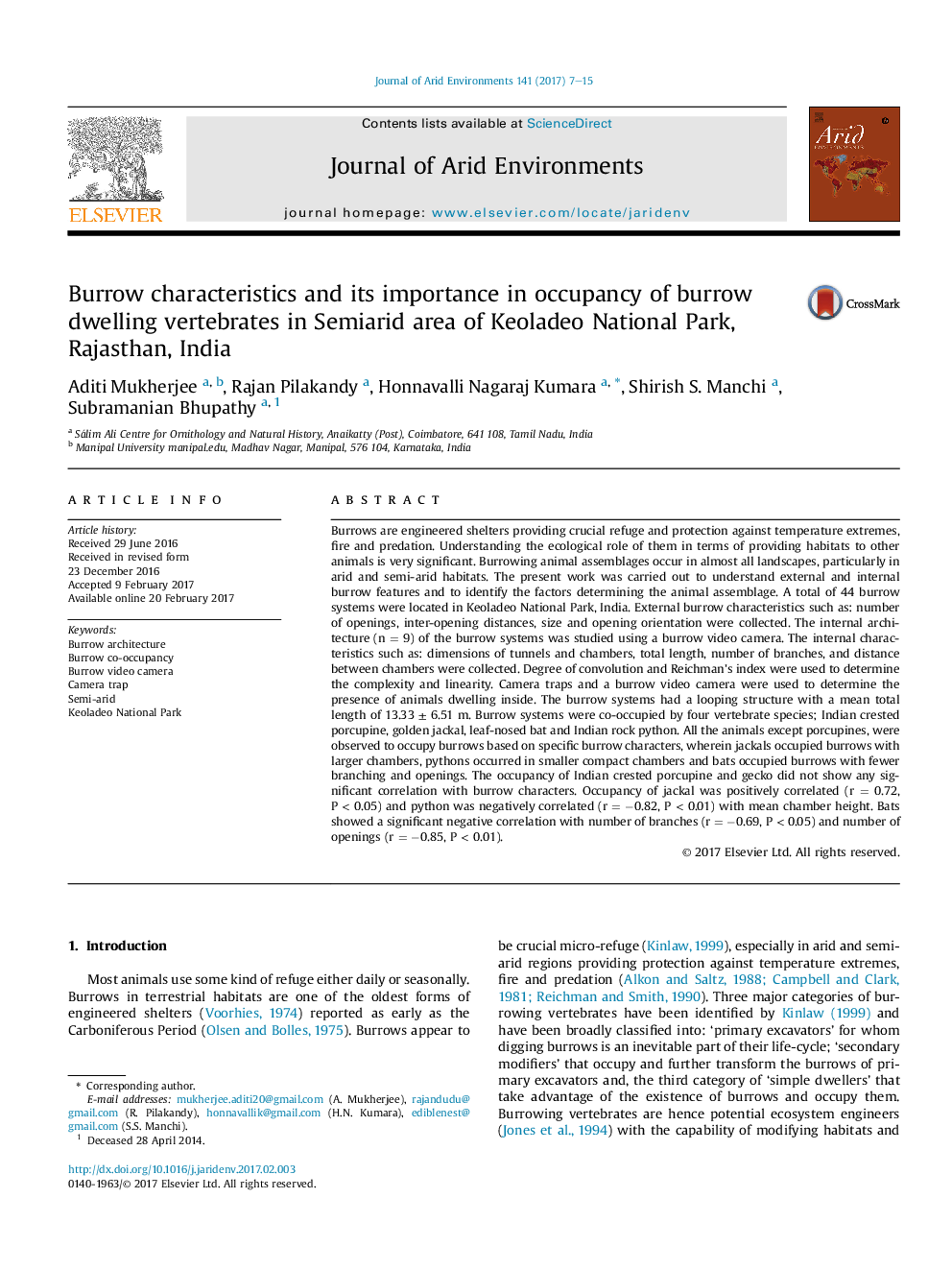| کد مقاله | کد نشریه | سال انتشار | مقاله انگلیسی | نسخه تمام متن |
|---|---|---|---|---|
| 5744304 | 1618218 | 2017 | 9 صفحه PDF | دانلود رایگان |

- Burrows are engineered shelters providing refuge and protection against temperature extremes, fire and predation.
- This study describes the external and internal burrow features and identifies the factors determining the animal assemblage.
- This study also explains ecological role of burrowing vertebrates in terms of providing habitats to other animals.
- Camera traps and burrow video camera were used to determine the presence of animals dwelling inside.
- Porcupine was a generalist burrower. Jackal, python and bat occupied burrows based on specific characters.
Burrows are engineered shelters providing crucial refuge and protection against temperature extremes, fire and predation. Understanding the ecological role of them in terms of providing habitats to other animals is very significant. Burrowing animal assemblages occur in almost all landscapes, particularly in arid and semi-arid habitats. The present work was carried out to understand external and internal burrow features and to identify the factors determining the animal assemblage. A total of 44 burrow systems were located in Keoladeo National Park, India. External burrow characteristics such as: number of openings, inter-opening distances, size and opening orientation were collected. The internal architecture (n = 9) of the burrow systems was studied using a burrow video camera. The internal characteristics such as: dimensions of tunnels and chambers, total length, number of branches, and distance between chambers were collected. Degree of convolution and Reichman's index were used to determine the complexity and linearity. Camera traps and a burrow video camera were used to determine the presence of animals dwelling inside. The burrow systems had a looping structure with a mean total length of 13.33 ± 6.51 m. Burrow systems were co-occupied by four vertebrate species; Indian crested porcupine, golden jackal, leaf-nosed bat and Indian rock python. All the animals except porcupines, were observed to occupy burrows based on specific burrow characters, wherein jackals occupied burrows with larger chambers, pythons occurred in smaller compact chambers and bats occupied burrows with fewer branching and openings. The occupancy of Indian crested porcupine and gecko did not show any significant correlation with burrow characters. Occupancy of jackal was positively correlated (r = 0.72, P < 0.05) and python was negatively correlated (r = â0.82, P < 0.01) with mean chamber height. Bats showed a significant negative correlation with number of branches (r = â0.69, P < 0.05) and number of openings (r = â0.85, P < 0.01).
Journal: Journal of Arid Environments - Volume 141, June 2017, Pages 7-15